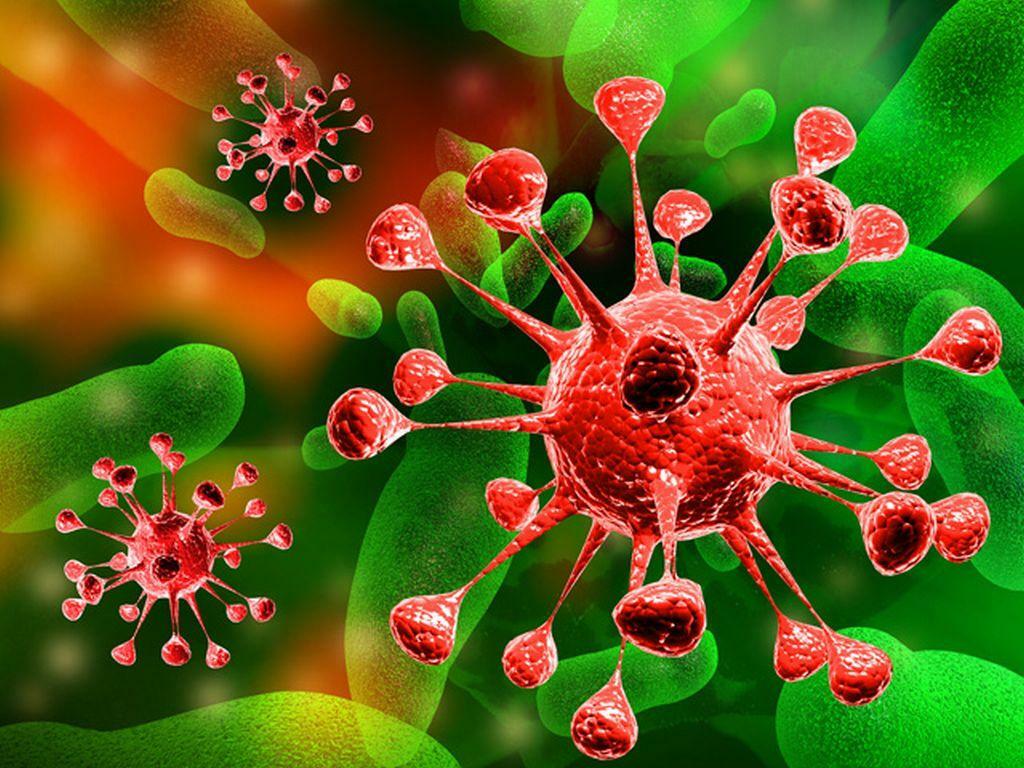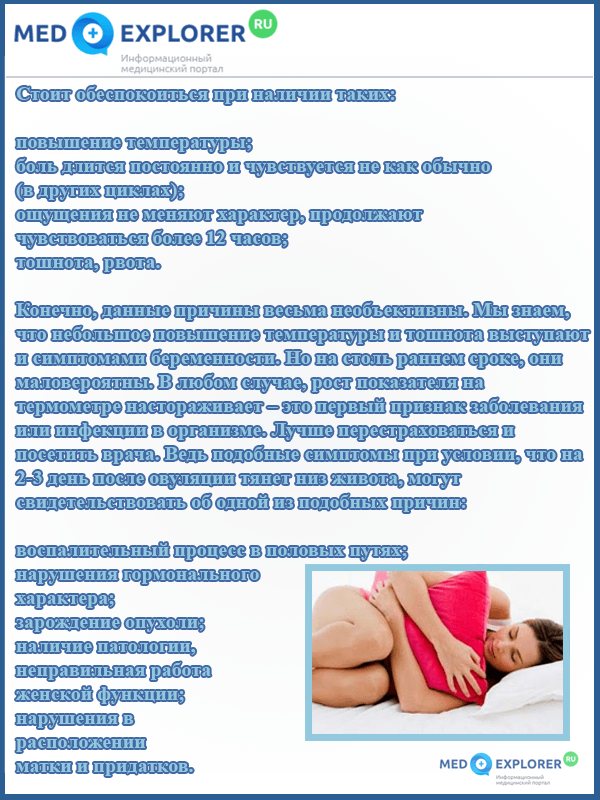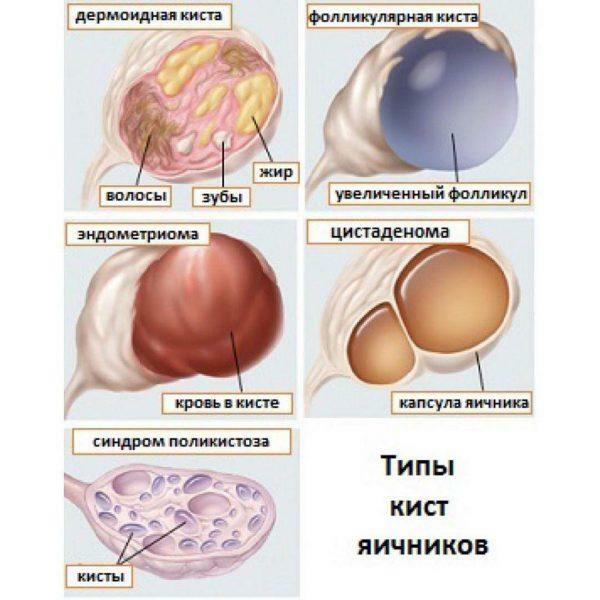Acute catarrhal otitis is a pathological process of an acute nature that is characterized by inflammation and spreads to the middle ear( cavity as a whole, mastoid, eustachian tube).This defeat of the middle ear can be observed, both in adults and in children, threatens with complete loss of hearing. Therefore, it is very important to know the first symptoms in order to start treatment in time.
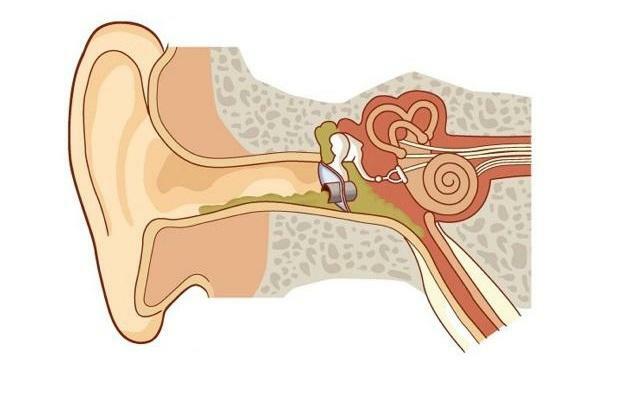
Acute catarrhal median otitis media
Content of the material
- 1 Symptoms of the disease
- 2 Causes of the onset of
- 3 What contributes to the disease?
- 4 Symptoms: How to determine the catarrhal otitis
- 5 How is the diagnosis?
- 6 Effective treatment
- 6.1 Video - Acute Otitis
Symptoms of the disease
Catarrhal otitis is characterized as an initial inflammatory process, which is supported by increased secretion of mucosal secretions. In conjunction with the secretion of epithelial cells. Sometimes leukocytes are added to this impurity.
Under the influence of the inflammatory process, noticeable disorders of the mucous membrane of the ciliated epithelium occur. The secretion of mucus is enhanced by the effects of viruses and pathogens.
Owing to the aforementioned disorders, swelling in the mouth of the auditory tube begins to develop. Over time, the tympanic membrane starts to suffer, in which the air circulation is disturbed.
The accumulation of exudate in the middle ear cavity occurs for four days. This is how much the catarrhal stage of otitis lasts. If the patient does not take therapeutic measures, then in the cavity there is accumulation of exudate, which leads to the formation of pus with the subsequent transition to the purulent stage of the disease.

What is acute catarrhal otitis media
Causes of
Catarrhal otitis is a direct consequence of bacterial or viral infection of the middle ear cavity. The main pathogens of this ailment are streptococci, staphylococci.
Physicians identify the following causes of the disease:
- Influenza and colds.
- Infectious ailments.
- Penetration into the middle ear of representatives of bacterial flora.
- Consequence of sinusitis.
- Sinusitis.
- Adenoidal lesion.
- Tonsillitis.
In the process of blowing or sneezing, the entry of pathogens into the middle ear cavity will help. But infection through the shelter is not excluded, most often it occurs in children that they suffer from an infectious disease.

Difference between the healthy ear and the ear with otitis media
What contributes to the disease?
The spread of catarrhal otitis occurs from the main foci through the blood of such serious ailments as measles and tuberculosis. To contribute to the development of the catarrhal stage of diabetes mellitus, kidney diseases, rickets. If a cold or flu is accompanied by the appearance of otitis, then there is an increased sneezing.
Caution! It is extremely important to promptly detect otitis during pregnancy, as this disease can negatively affect a child after birth and result in deafness.
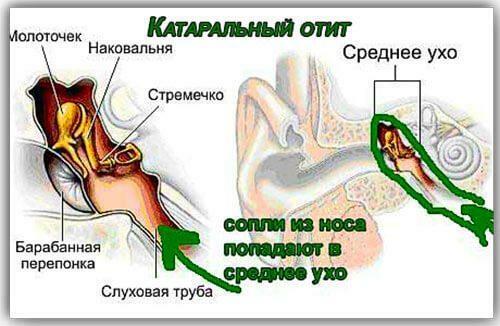
Catarrhal otitis
Symptoms: How to determine catarrhal otitis
If the disease occurs in an acute form, the first symptomatology will begin to manifest itself in the near future. The disease begins with a noticeable increase in temperature, the obstruction of the ear, which leads to a worsening of the hearing, painful sensations( pulsating nature) in the middle ear that is given in the teeth.
The inflammatory process is most often of a one-sided nature, however, in medicine, patients have been diagnosed with bilateral catarrhal otitis. The phenomenon is quite complicated, therefore requiring long-term treatment under the supervision of a specialist.

Discharge from the ear with otitis
The main complaint in the initial stages of otitis is autophonia. The patient begins to hear his voice in the sore ear. Over time, this phenomenon disappears and instead of him the patient clearly hears noise. This is due to the filling of the ear cavity with serous exudate.
Warning! To confirm catarrhal otitis can be pressed on the tragus, resulting in severe pain. Soreness will increase proportionally as the inflammatory process progresses.
One of the most unpleasant and uncomfortable symptoms is shooting pain. In general, the patient feels a strong malaise, fatigue, poor health. The body temperature rises to 38 C( typical for school-age children).More severely tolerate the course of the disease infants and children up to one year, since the temperature can rise to 40 C. In this case, it is urgently necessary to call an ambulance.
Symptomatic increases and as it occurs, intoxication of the child's body with a marked deterioration in the state of health until the onset of seizures. Often there is vomiting, as a result of intoxication processes. Such signs warn of a purulent otitis stage.
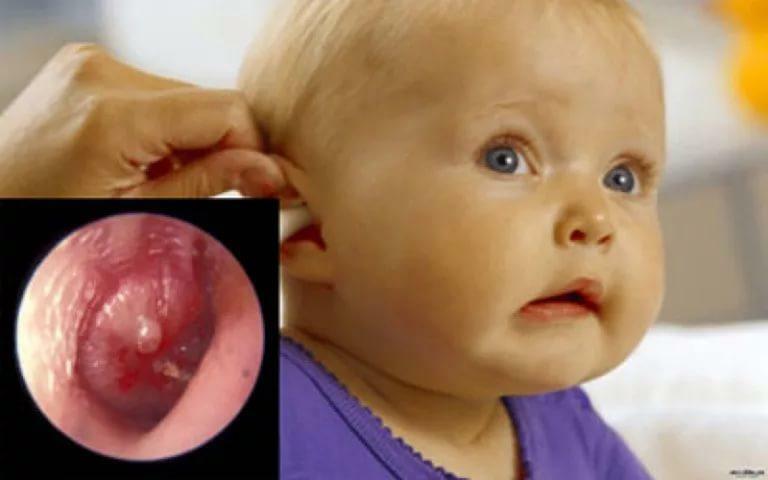
Otitis media of the middle ear in children
So, the general symptoms of otitis include the following symptoms:
- Strengthened pain syndrome inside the ear.
- The pain is piercing, pulsating and often gives to the temporal region.
- Rumor is reduced through the stuffiness of the ear.
- When exposed to a tragus, severe pain occurs.
- Body temperature within 38 C, and one-year-olds - 40 C.
- Misery, worsening of health.
Warning! When the catarrhal form is complicated by an infectious disease, there will be a repeated increase in temperature. When examining the ear can be seen redness of the tympanic membrane, when pressing on which will appear a sharp pain. Blood tests will confirm the inflammatory process in the body, as leukocytosis will be diagnosed.
How is the diagnosis?
To identify changes in the tympanic membrane of the patient is sent for otoscopy, the following indices are noted:
- Clear reddening of the tympanic membrane through blood-filled blood vessels.
- The tympanic membrane is elongated with a characteristic impaired mobility.

Otoscopic picture of otitis media of middle ear
This is important! If the eardrum stretches into the ear cavity, then the deafness that develops due to poor mobility of the auditory ossicles is not excluded.
Effective treatment of
If the disease is diagnosed in a child under two years of age, then mandatory hospitalization is necessary. Adults who have a severe form of illness are also shown hospitalization or treatment under the watchful eye of a doctor.
Catarrhal otitis requires the use of physiotherapy procedures in conjunction with taking medications. Thus, the patient is prescribed warm compressions, UHF-therapy.
The main goal of therapy in the catarrhal form of otitis is the removal of edema in the nasopharynx and normalization of ventilation in the middle ear. Therefore, it is necessary to use drops in the nose( Otrivin, Nazivin).In the ear cavity, too, it is necessary to use anti-inflammatory drops( it is worth paying attention to Otinum).
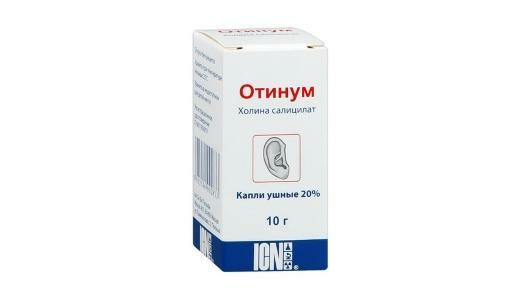
Ear drops Asinum
One of the symptoms that requires urgent elimination is high fever. It is reduced with the help of conventional drugs, for example, aspirin. For the analgesic effect, the patient is given Ibuprofen.
| Type of therapy | Short description | Forbidden for children |
|---|---|---|
| Classical | Typical therapy is prescribed by a physician based on existing infections or already transferred. 1. To relieve pain. Take in a dosage appropriate to the age category Ibuprofen or Paracetamol. In the nasal passages instilled warm drops with antiseptic effect( Otipaks). 2. Antibiotics. This group of drugs can be used for children under two years of age( mandatory), with a temperature increase of up to 40 C. For this, penicillin groups and macrolides | are used. There are contraindications to preparations that are forbidden to be used in the treatment of children: drops that in its compositionI have alcohol. It is explained by the ototoxic effect on the auditory analyzers; candles from wax through a high likelihood of burns; half-alcohol compresses. They are not used in children under two years of age due to an increased risk of intoxication( rapid absorption into the blood occurs). |
| . Alternative therapy. | . Such treatment is not used as the main therapy, as its effectiveness in catarrhal otitis has not been proven. It is appropriate, as an additional treatment under the supervision of a doctor. This therapy may include: treatment with herbal decoctions; application of acupuncture; use of homeopathy |
Caution! If the catarrhal otitis was observed in a child under two years of age during the formation of the speech, then upon completion of the treatment it is necessary to go for additional examination and diagnostics to eliminate the consequences on the hearing of the .
For treatment of pregnant women it is allowed to use antibiotic therapy in the form of Amoxicillin. In contrast, painkillers are given only in the case of a sharp deterioration in well-being and exacerbation of the pain syndrome. After childbirth, the child should be checked to exclude the effects on the hearing through the mother's otitis media.
Why it is forbidden to self-medicate with acute otitis and what it can lead to, you can learn from the video.

